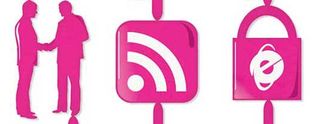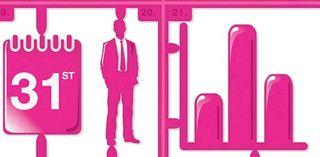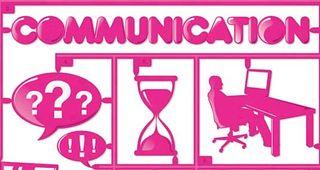How to take the stress out of meetings
What happens if you feel overwhelmed in a meeting? Ted Leonhardt, a consultant specialising in the creative industries, has some advice for you.
Presenting yourself as a creative professional comes with a special kind of pressure. You are representing, not only yourself, but yourself plus the work you’ve done. Not only is your appearance and performance examined, but things that you create with your hands, heart and mind are judged as well.
This aspect of being a creative professional comes with a heady combination of highs and lows. The thrills that come from the process of creation come with a big dose of anxiety over how our work will be received. We creatives undoubtedly get into this business because of the thrill of doing the work and getting recognized for it. The flip side is the vulnerability that we experience over how our work is received.
We don't like to admit it, but sometimes the pressure gets too much. In which case, what can you do?
In this article, I'll try to offer some honest advice based on my own experience. But first, let's look at why we feel overwhelmed...
01. Reasons for stress

Sometimes during a stressful interview, negotiation or presentation, we feel overwhelmed. And although it's not something we tend to talk about, but it's not really surprising that it happens.
These meetings are important. They are critical for our future. In extreme circumstances you may find your vision narrowing, a pounding sensation in your ears, stomach upset or any number of sensations. These 'out of balance' feelings can happen to anyone. Or you might find yourself with nothing to say, and that’s bad enough. It’s happened to me.
Continuing the meeting - trying to suppress the feelings - it's likely that the discomfort will return. And simply 'getting past it' just doesn’t work. At least, in my experience it never did.
Get the Creative Bloq Newsletter
Daily design news, reviews, how-tos and more, as picked by the editors.
02. Taking action

What works in my experience is taking direct action. The easiest action is to take a break from the discussion.
You may feel awkward about this, so here are three examples of things you can say to facilitate the break:
- "I'll just take a moment to think about this." Rise from your chair and leave the room. "I'll be back in a minute." Don't allow your opposite to stop you.
- "I need just a moment to compose myself." This just might get the other party to rethink their approach.
- "Could we pause for a few minutes? I need a break."
03. Dealing with anxiety

Whatever course of action you take, the important thing is to be aware in advance that you can excuse yourself. That's important because when you're in the room and feeling pressed you must recognize that these anxious feelings are a signal to take action. If you're not aware of this option and are prepared to take it, the anxiety could take over and reduce your ability to deal with the situation, or worse a breakdown.
It's important to remember that to do your best for yourself, and your client or potential employer, you must be at your best. In fact, taking a break honours the importance of the meeting. You're doing it in the spirit of doing your best.
04. Regaining control
Once you are heading for the restroom, you'll feel much better. The simple fact that you took action to regain control will make you feel better. With your confidence returning, think of a few questions to use once you’re back at the table.
Questions are another method of maintaining your confidence. Questions will help you gain more control of the situation and demonstrate your interest. The break gives you a chance to restart and regain control of the encounter.
05. Rejoining the meeting

Returning to the meeting you need to restart the conversation. So what's a good way to do so?
- You could say, "I was surprised to hear you say_____. Could you explain further?"
- You can enlist their help in getting past the situation with: "Is there a way we can work together to solve this?"
- Try one of my all-time favourite sentences: "Help me to understand why it creates difficulty for you."
- Or "Let's try to think of ways to meet both our needs."
Importantly, all these questions use neutral language and are used in a spirit of mutuality. You are showing your spirit of collaboration. All are in the best interest of you and your opposite.
Best of all they put you back in control. With control, you'll feel stronger, better and worthy of the consideration of your opposite.
Words: Ted Leonhardt
Ted Leonhardt cofounded The Leonhardt Group, a brand design firm in 1985. In 2001 and 2002 he was chief creative officer for Fitch Worldwide, London, then in 2003 became president of Anthem Worldwide. He's been providing management consulting and negotiation training exclusively to creative businesses since 2005.
Liked this? Read these!
- Create a perfect mood board with these pro tips
- The best Photoshop plugins
- The ultimate guide to designing the best logos
Have you been a meeting where you felt the pressure? How did you respond? We'd love to hear your comments.

Thank you for reading 5 articles this month* Join now for unlimited access
Enjoy your first month for just £1 / $1 / €1
*Read 5 free articles per month without a subscription

Join now for unlimited access
Try first month for just £1 / $1 / €1
The Creative Bloq team is made up of a group of design fans, and has changed and evolved since Creative Bloq began back in 2012. The current website team consists of eight full-time members of staff: Editor Georgia Coggan, Deputy Editor Rosie Hilder, Ecommerce Editor Beren Neale, Senior News Editor Daniel Piper, Editor, Digital Art and 3D Ian Dean, Tech Reviews Editor Erlingur Einarsson and Ecommerce Writer Beth Nicholls and Staff Writer Natalie Fear, as well as a roster of freelancers from around the world. The 3D World and ImagineFX magazine teams also pitch in, ensuring that content from 3D World and ImagineFX is represented on Creative Bloq.
